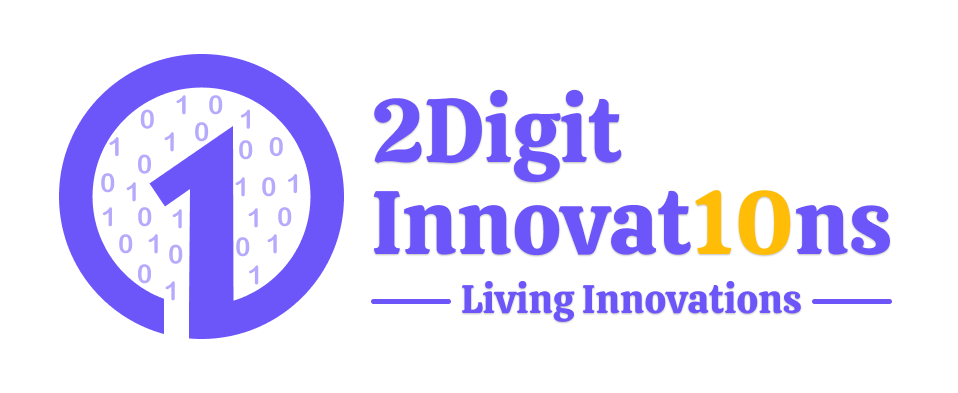
How can I measure the success of my social media marketing?
25 Jun 24
How can I measure the success of my social media marketing?
Social media marketing is a powerful tool for businesses to reach and engage with their audience. But how do you know if your efforts are paying off? Measuring the success of your social media marketing is crucial to understanding what works, what doesn’t, and how you can improve your strategy. In this comprehensive guide, we’ll explore various ways to evaluate the effectiveness of your social media marketing efforts. Table of Contents | Sr | Headings |-----|-------------------------------------- | 1 | Introduction | 2 | Understanding Social Media Marketing Success | 3 | Setting Clear Goals | 4 | Key Metrics to Track | 5 | Analyzing Engagement Rates | 6 | Monitoring Reach and Impressions | 7 | Evaluating Conversion Rates | 8 | Assessing Audience Growth | 9 | Using Social Media Analytics Tools | 10 | Comparing Organic and Paid Results | 11 | Tracking Referral Traffic | 12 | Evaluating Brand Sentiment | 13 | Reviewing Competitor Performance | 14 | Creating Comprehensive Reports | 15 | Adjusting Your Strategy | 16 | Conclusion | 17 | FAQs 1. Introduction Social media marketing is an essential part of any business strategy. However, to truly understand its impact, you need to measure its success. This guide will walk you through various methods and metrics to help you evaluate your social media marketing efforts effectively. 2. Understanding Social Media Marketing Success Success in social media marketing isn’t just about the number of likes or followers you have. It’s about engagement, conversions, and how well you meet your business goals. Think of social media marketing as planting a garden. It’s not just about having many plants but having healthy plants that bear fruit. 3. Setting Clear Goals Before diving into metrics, it’s crucial to set clear, measurable goals. These goals will guide your analysis and help you determine what success looks like. Are you aiming to increase brand awareness, drive website traffic, or boost sales? Clear goals are the foundation of any successful social media strategy. For instance, if your goal is to increase website traffic, you might track the number of clicks your social media posts generate. If brand awareness is your aim, you’ll look at metrics like reach and impressions. 4. Key Metrics to Track There are several key metrics to track when measuring social media success. These include engagement rates, reach, impressions, conversion rates, and audience growth. Each of these metrics provides valuable insights into different aspects of your social media performance. 4.1 Engagement Rates Engagement rates measure how actively your audience interacts with your content. This includes likes, comments, shares, and retweets. High engagement rates indicate that your content resonates with your audience and encourages interaction. 4.2 Reach and Impressions Reach refers to the number of unique users who see your content, while impressions count how many times your content is displayed. These metrics help you understand how far your content is spreading and how many times it’s being viewed. 4.3 Conversion Rates Conversion rates track the number of users who take a desired action after clicking on your social media posts. This could be anything from making a purchase to signing up for a newsletter. Conversion rates are crucial for measuring the effectiveness of your social media campaigns in driving specific actions. 4.4 Audience Growth Audience growth measures the increase in your followers over time. While having a large following doesn’t guarantee success, a steadily growing audience suggests that your content is attracting new users and keeping them interested. 5. Analyzing Engagement Rates To truly understand engagement, look beyond the numbers. Analyze which types of posts generate the most interaction and why. Is it the format, the timing, or the content itself? Understanding these factors can help you create more engaging posts in the future. For example, you might find that posts with images receive more likes and comments than text-only posts. Or perhaps videos perform better on certain days of the week. Use these insights to refine your content strategy. 6. Monitoring Reach and Impressions Reach and impressions are essential for understanding the visibility of your content. A high reach means your content is being seen by many people, while high impressions indicate frequent exposure. Monitoring these metrics can help you identify trends and optimize your posting schedule. For instance, if you notice that your reach increases significantly during certain times of the day, you can schedule your posts for those times to maximize visibility. Similarly, if certain types of content consistently generate more impressions, you can focus on creating more of that content. 7. Evaluating Conversion Rates Conversion rates are a direct measure of how effectively your social media efforts drive desired actions. Use tracking links and pixels to monitor conversions from social media. Analyze which posts or campaigns have the highest conversion rates and replicate their success. For example, if a particular Instagram ad campaign results in a high number of website sign-ups, you might consider using similar ad formats and targeting strategies in future campaigns. Additionally, tracking the customer journey from social media to conversion can provide valuable insights into user behavior. 8. Assessing Audience Growth Steady audience growth indicates that your content is attracting new followers. However, it’s not just about the numbers. Look at the quality of your followers. Are they engaging with your content? Are they within your target demographic? Quality is just as important as quantity. For instance, if your follower count is increasing but engagement rates are declining, it might indicate that you’re attracting the wrong audience. On the other hand, if your followers are actively engaging with your posts, it suggests that your content is resonating with the right people. 9. Using Social Media Analytics Tools There are numerous tools available to help you track and analyze your social media performance. Tools like Hootsuite, Sprout Social, and Google Analytics provide detailed insights into your metrics. Utilize these tools to streamline your analysis and gain deeper insights. These tools can help you track a wide range of metrics, from engagement rates to conversion rates, and provide detailed reports that highlight your performance over time. Additionally, many tools offer features like sentiment analysis, which can help you understand how your audience feels about your brand. 10. Comparing Organic and Paid Results Organic and paid social media efforts can yield different results. Compare the performance of your organic posts to your paid campaigns to understand where your efforts are most effective. This comparison can help you allocate your resources more efficiently. For example, if your paid ads are driving more conversions than your organic posts, you might consider increasing your ad budget. Conversely, if organic posts are performing well, you can focus on creating more high-quality content to drive organic growth. 11. Tracking Referral Traffic Referral traffic measures how many visitors come to your website from your social media channels. Use tools like Google Analytics to track this metric. High referral traffic indicates that your social media efforts are effectively driving users to your website. By analyzing referral traffic, you can see which social media platforms are generating the most traffic to your website. This information can help you focus your efforts on the platforms that provide the highest return on investment. 12. Evaluating Brand Sentiment Brand sentiment refers to how people feel about your brand. Use social listening tools to monitor mentions and analyze the sentiment of these mentions. Positive sentiment indicates a healthy brand image, while negative sentiment highlights areas for improvement. For example, if you notice a spike in negative mentions after a particular post or campaign, you can investigate the cause and take corrective action. On the other hand, positive sentiment can help you identify successful strategies that you can replicate in the future. 13. Reviewing Competitor Performance Analyzing your competitors’ social media performance can provide valuable insights. Look at their engagement rates, content strategies, and follower growth. Identify what they’re doing well and consider how you can apply these strategies to your own efforts. For example, if a competitor’s video content is generating high engagement, you might consider incorporating more video into your own social media strategy. Additionally, keeping an eye on competitor performance can help you identify new trends and opportunities in your industry. 14. Creating Comprehensive Reports Creating regular reports helps you track your progress and communicate your results to stakeholders. Include key metrics, insights, and recommendations in your reports. This practice ensures that everyone is aligned and aware of your social media performance. Your reports should provide a clear overview of your social media performance, including key metrics like engagement rates, reach, and conversion rates. Additionally, include insights into what’s working well and areas for improvement, along with actionable recommendations for future strategies. 15. Adjusting Your Strategy Measuring success is not a one-time task. Regularly review your metrics and adjust your strategy based on your findings. Continuous improvement is key to long-term success in social media marketing. For example, if your engagement rates are declining, you might need to adjust your content strategy to better resonate with your audience. Similarly, if your conversion rates are low, you might need to refine your targeting or messaging. 16. Conclusion Measuring the success of your social media marketing efforts is crucial for understanding what works and what doesn’t. By setting clear goals, tracking key metrics, and regularly reviewing your performance, you can continuously improve your strategy and achieve your business objectives. Remember, social media marketing is a dynamic field, and staying adaptable is key to long-term success. 17. FAQs 1. What are the most important metrics to track in social media marketing? The most important metrics to track include engagement rates, reach, impressions, conversion rates, audience growth, and referral traffic. These metrics provide a comprehensive view of your social media performance. 2. How often should I review my social media metrics? It’s a good practice to review your social media metrics at least once a month. However, for more dynamic campaigns, weekly or even daily reviews might be necessary to stay on top of performance and make timely adjustments. 3. Can social media analytics tools help improve my strategy? Yes, social media analytics tools provide valuable insights into your performance and can help you identify trends, strengths, and areas for improvement. These tools make it easier to track metrics and adjust your strategy based on data. 4. How do I know if my social media marketing is successful? Success in social media marketing is determined by how well you achieve your goals. If your metrics show positive trends in engagement, reach, conversions, and audience growth, it indicates that your efforts are successful. 5. What should I do if my social media metrics are declining? If your social media metrics are declining, analyze your recent posts and campaigns to identify potential issues. Adjust your content strategy, posting schedule, or targeting to address the decline and improve your performance.


CALL
Ready to Work Together In New Projects ?
Services
App Development
Web App Development
Digital Marketing
UI And UX Designing
Custom Mobile And Web Development
Free Tools
Quick Links
Our Apps
Find us on Clutch
Privacy & Policy
Shipping & Delivery Policy
Return & Refund Policy
Terms & Condition
FAQs
Legal
Contact
Hyde Park Crown First Floor, FF-14-21 Plot No GH-03 Sector-78, Noida, Uttar Pradesh 201306
info@2digitinnovations.com
+91 7814042409
